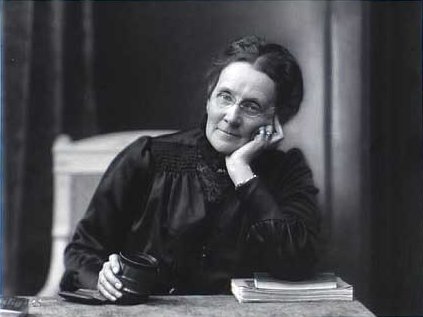Julie Laurberg on:
[Wikipedia]
[Google]
[Amazon]
 Julie Rasmine Marie Laurberg (7 September 1856 – 29 June 1925) was an early Danish photographer who, together with Franziska Gad (1873–1921), ran a successful photography business in central Copenhagen.
Julie Rasmine Marie Laurberg (7 September 1856 – 29 June 1925) was an early Danish photographer who, together with Franziska Gad (1873–1921), ran a successful photography business in central Copenhagen.
"Julie Laurberg"
''Den Store Danske''. Retrieved 5 March 2013. Laurberg's architectural photographs were also appreciated, in particular those of the new goodsyard and the hall in the
''Dansk kvindebiografisk leksikon''. Retrieved 5 March 2013.
{{DEFAULTSORT:Laurberg, Julie 1856 births 1925 deaths Danish feminists Danish women photographers Photographers from Copenhagen Danish portrait photographers 19th-century Danish photographers 19th-century Danish businesspeople People from Norddjurs Municipality Burials at Assistens Cemetery (Copenhagen) 19th-century women photographers
 Julie Rasmine Marie Laurberg (7 September 1856 – 29 June 1925) was an early Danish photographer who, together with Franziska Gad (1873–1921), ran a successful photography business in central Copenhagen.
Julie Rasmine Marie Laurberg (7 September 1856 – 29 June 1925) was an early Danish photographer who, together with Franziska Gad (1873–1921), ran a successful photography business in central Copenhagen.
Early life and education
Born inGrenå
Grenaa (or Grenå) is a Denmark, Danish town and seaport on the east coast of the Jutland peninsula. Tourism, education and commerce are important sectors in the economy of Grenaa. It is the only larger town on Djursland. Grenaa is the municipal ...
, Laurberg trained under the painter and photographer Leopold Hartmann before continuing her studies in Paris and Italy.
Career
In 1895, she opened her own studio in the newMagasin du Nord
Magasin is a Denmark, Danish chain of department stores. It has seven department stores with its flagship store located on Kongens Nytorv in Copenhagen. The company is a subsidiary of the German department store retailer Peek & Cloppenburg, Peek & ...
building in central Copenhagen where she worked with her former pupil Franziska Gad. From 1907, when Gad became an official partner in her business, the studio became widely recognized, attracting well-to-do personalities to have their portraits taken. One of her most notable portraits is that of opera singer Margrethe Lendrop which was widely published as a post-card engraving known as Julie L. & Gad. In 1910 the firm received the status of royal court photographer.''Den Store Danske''. Retrieved 5 March 2013. Laurberg's architectural photographs were also appreciated, in particular those of the new goodsyard and the hall in the
City Hall
In local government, a city hall, town hall, civic centre (in the UK or Australia), guildhall, or municipal hall (in the Philippines) is the chief administrative building of a city, town, or other municipality. It usually houses the city o ...
building. Between 1908 and 1910, she also took photographs of Christian IX's Palace at Amalienborg
Amalienborg () is the official residence for the Danish royal family and is located in Copenhagen. Frederick VIII's palace complex has four identical Classical façades, effectively four palaces, with Rococo interiors, laid around an octagona ...
, many of which have been preserved as large prints.
Death
She died on 29 June 1925 and is buried inAssistens Cemetery
An Assistens Cemetery () is a cemetery that functions as an expansion of another, older cemetery often in relation to a city church.
Already by the end of the 17th century, Danish authorities deemed that the conditions for inner-city cemeteries we ...
.
Women's rights
Laurberg was also active in women's rights. She was a member of the Danish Women's Society (''Dansk Kvindesamfund
The Danish Women's Society or DWS () is Denmark's oldest women's rights organization. It was founded in 1871 by activist Matilde Bajer and her husband Fredrik Bajer; Fredrik was a Member of Parliament and the 1908 Nobel Peace Prize laureate. The ...
)'' and, in 1920, a founding member of the Women's Dwellings Association (''Kvindernes Boligselskab)''. She also gave support to the role of women in photography which was becoming a popular profession for women at the time. Those working in her large photographic business were nearly all women.Tove Thage, "Julie Laurberg (1856 - 1925)"''Dansk kvindebiografisk leksikon''. Retrieved 5 March 2013.
References
External links
{{DEFAULTSORT:Laurberg, Julie 1856 births 1925 deaths Danish feminists Danish women photographers Photographers from Copenhagen Danish portrait photographers 19th-century Danish photographers 19th-century Danish businesspeople People from Norddjurs Municipality Burials at Assistens Cemetery (Copenhagen) 19th-century women photographers